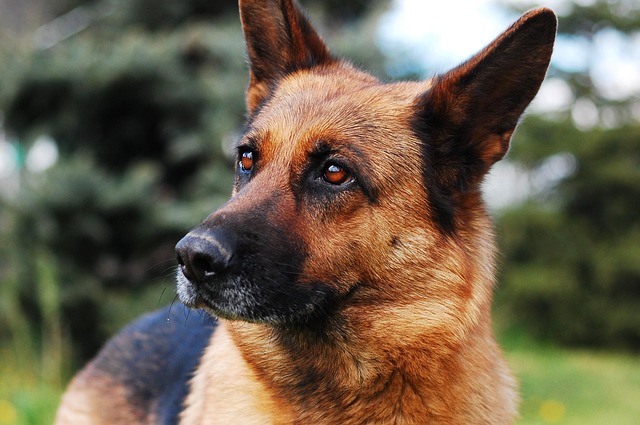
How can I tell if my dog's heatstroke is serious
Let’s be real: It’s a sticky August morning in Los Angeles, and you took your 2-year-old Golden Retriever, Max, for a walk a little later than usual
I’ll start with a relatable scenario of an owner struggling with their anxious pup’s stressful walks, explain how anxiety hijacks a dog’s stress response, share gentle, positive steps to build confidence, and weave in welfare and compliance tips naturally.
I stood on my friend Lena’s Seattle sidewalk last week, watching her 2-year-old Cocker Spaniel, Mabel, press herself against a fence—tail tucked, trembling—when a cyclist passed. “She used to love exploring, but now walks feel like torture. How to help anxious dog on walks without making her more scared?” Lena whispered, offering Mabel a treat that went untouched. If you’re a new U.S. dog owner with a pup who freezes, flees, or shuts down outdoors, the answer lies in small, kind steps that turn “scary” into “safe”—not forcing progress, but meeting them where they are.
To understand how to help an anxious dog on walks, let’s break down canine stress biology. Lena’s trainer, Maria, explained that anxious dogs like Mabel have overactive amygdalas (the brain’s fear center), which flood their bodies with cortisol when triggered. This makes learning impossible—so yelling, pulling, or pushing only worsens their panic. Unlike confident dogs, anxious pups need to feel in control; your job is to be their “safety anchor,” not a leader forcing direction. Scolding Mabel for freezing (like Lena almost did out of frustration) violates U.S. animal welfare standards; Mabel wasn’t being “difficult”—she was begging for reassurance, and our job is to calm her, not correct her.

Here’s how to help an anxious dog on walks, using Lena’s vet-approved plan for Mabel: First, prep “safety tools” (set them up for success). Maria had Lena swap Mabel’s collar for a soft harness (no pressure on the neck, which amplifies anxiety) and carry a “calm bag” with freeze-dried chicken (high-value, stress-relieving treats) and a small blanket. For apartment living, they practiced putting the harness on indoors with treats—turning it from a “walk signal” into a “good thing.” Lena also kept walks to 5 minutes max at first—short enough to avoid overwhelm. Second, create a “safe zone” routine (start small). They began by sitting on the apartment doorstep for 2 minutes daily: Mabel got a treat every time she looked outside without trembling. When she ventured one paw onto the sidewalk, she got three treats and a calm “good girl.” Lena never pushed past Mabel’s comfort—some days, they only stayed on the step. Third, use “counterconditioning” (link triggers to rewards). When a jogger approached, Lena stopped, knelt down, and fed Mabel treats while the jogger passed—teaching her “strangers = snacks, not danger.” She kept her body between Mabel and the trigger, acting as a physical barrier of safety. Fourth, end on a win (build positive memories). Lena always turned back toward home before Mabel showed stress cues (lip-licking, flattened ears). They’d finish with a 30-second play session in the building’s lobby—associating walks with fun, not fear.
For community and compliance, helping anxious dogs ties to good habits: As Mabel grew braver, Lena extended walks to quiet morning hours (few cars, no crowds) and always carried biodegradable poop bags (Seattle fines $175 for uncollected waste)—short, calm walks meant Mabel still handled potty time without stress. She kept Mabel on a 6-foot leash (city rules) and stepped into doorways if a cyclist or dog approached (avoiding triggers). She confirmed Mabel’s rabies vaccine was up to date (mandatory nationwide)—vet visits let them adjust their plan as Mabel’s confidence grew. Maria reminded her: “Progress isn’t linear. If Mabel has a bad day, go back to the doorstep. Trust takes time, but it’s worth it.”
A week later, Lena texted me a video: Mabel trotting beside her on a quiet side street, stopping to sniff a flower, tail loose. How to help anxious dog on walks? For Mabel, it was safety tools, tiny steps, and turning triggers into treats. For your pup, it’s being their calm, patient anchor. Walks don’t have to be long—they just have to feel safe. And when they do, you’ll watch your anxious pup bloom into an explorer.

Let’s be real: It’s a sticky August morning in Los Angeles, and you took your 2-year-old Golden Retriever, Max, for a walk a little later than usual

You're enjoying a summer afternoon at the park when you notice your dog has stopped panting and appears disoriented - their gums are bright red

Let’s paint the picture: You’re in your Denver apartment, watching your 4-year-old Boston Terrier, Ruby, plop down mid-play session with her favorite toy

Many dog owners notice their pets nails seem shorter after regular walks,but how much does this daily activity actually help?The answer depends on where you walk—concrete sidewalks or asphalt streets gently file nails as a dog's paws hit the ground

Most dog owners notice their pup scooting across the carpet at some point, but few connect it to impacted anal glands. These small sacs near a dog’s rectum secrete a scent for marking territory

Most vets agree that regular dog teeth cleaning is key to avoiding painful dental issues later. For healthy adult dogs, a professional cleaning at the vet’s office every 12 to 18 months usually works well.